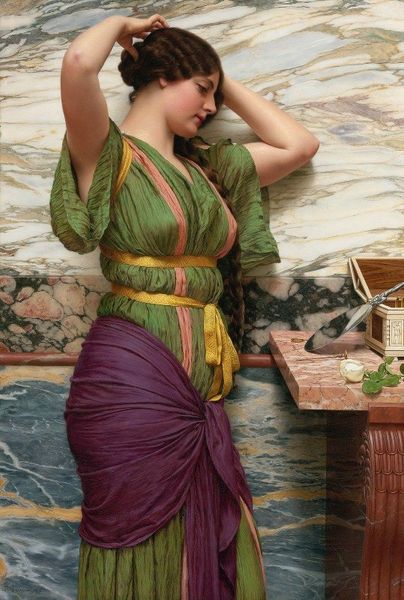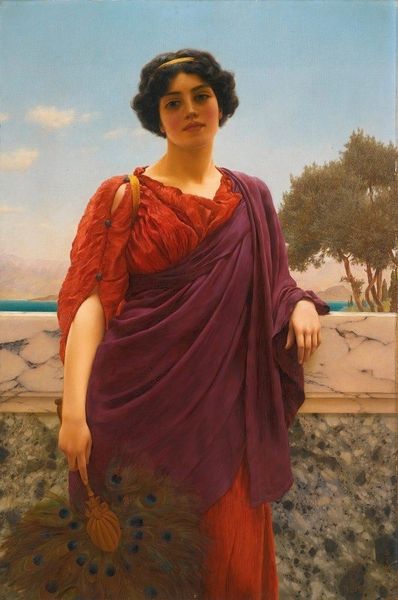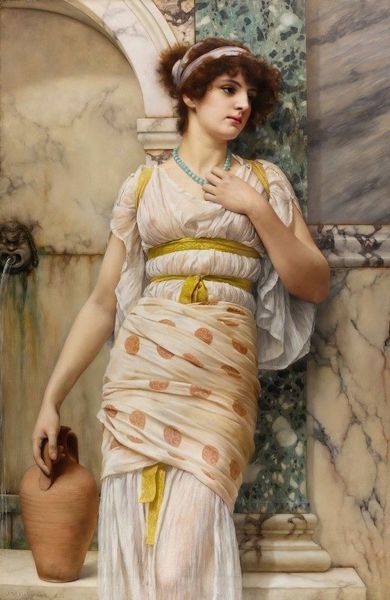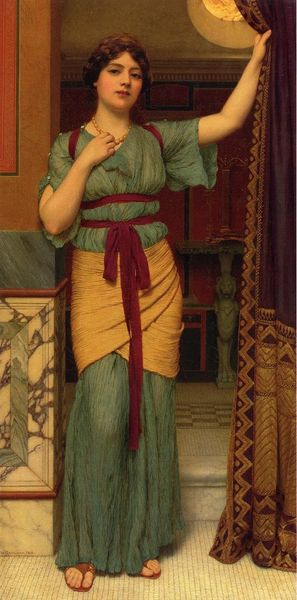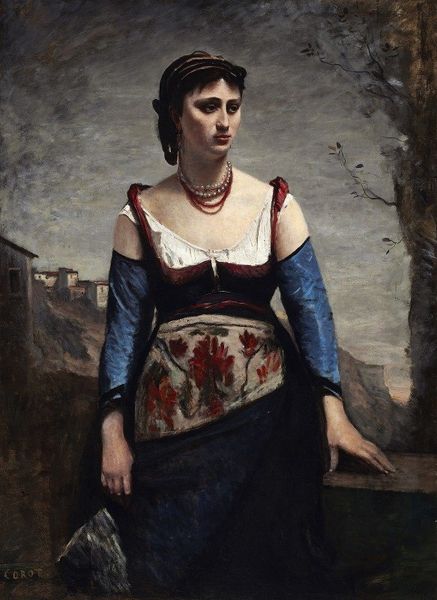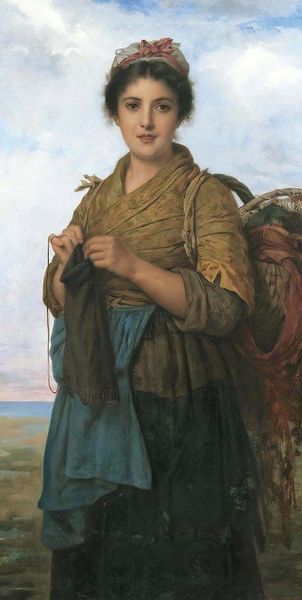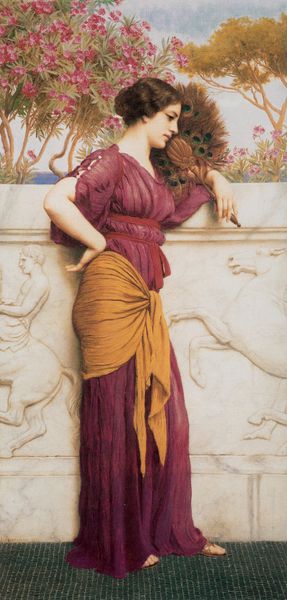
Copyright: Public Domain: Artvee
Curator: Standing before us is John William Godward’s “Eurypyle,” completed in 1920, rendered skillfully in oil paint. Editor: It's astonishingly smooth! The way the colors blend, it’s almost unsettlingly perfect. There's a deliberate placidity about the subject and the palette. Curator: Godward, entrenched in Academic Art and Neoclassicism, displays an adherence to classical themes. This piece seems steeped in artifice. What might a focus on material production reveal here? Editor: Look closely. Godward creates an illusion with the clothing and the marble backdrop. Notice the sheerness of her garment and the contrasting textures in her pleated skirt versus the veined marble wall—they're all painted illusions, cleverly masking the labor of painting itself! There’s also an element of accessibility. Oil paints became a standard art medium around the fifteenth century, available for use at that time but still costly for artists such as Godward who used this to display a lavish background such as a large wall. The depiction gives us the opportunity to explore questions related to cultural elitism prevalent during that era. Curator: True, but within those illusions, the careful construction creates visual harmonies. Her drapery, for instance: the cascading folds echo the marble’s striations, weaving surface patterns to give an underlying symmetry. There is so much balance, you cannot deny its beauty. Editor: Yes, and what does this "beauty" represent beyond aesthetics? Consider the peacock fan, or the very setting Godward uses, possibly as nods to Victorian-era notions of wealth or social status... These are physical constructs and markers indicative to economic activity within Edwardian society. It raises queries about what his intention in documenting these physical props were for the historical figures being memorialized with his paintings? Curator: You offer a valuable dimension—questioning the underpinnings behind the presentation and production. However, observing “Eurypyle’s” masterful depiction reveals a commitment to idealized form through precise line, volume, and overall unity. Godward offers us an alternative by returning to traditionalism—away from impressionism. Editor: Indeed. Understanding those economic engines and Godward's artistic practice offers context, reminding us of how entwined art remains with our human story. Curator: Ultimately, 'Eurypyle' provides both surfaces and depths—a fascinating object worthy of contemplation on many levels.
Comments
No comments
Be the first to comment and join the conversation on the ultimate creative platform.





